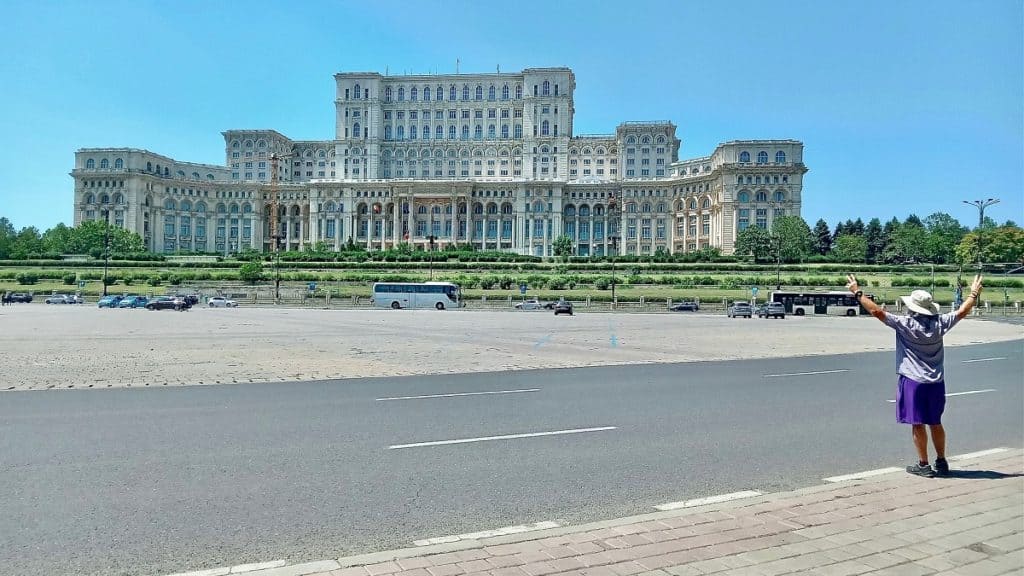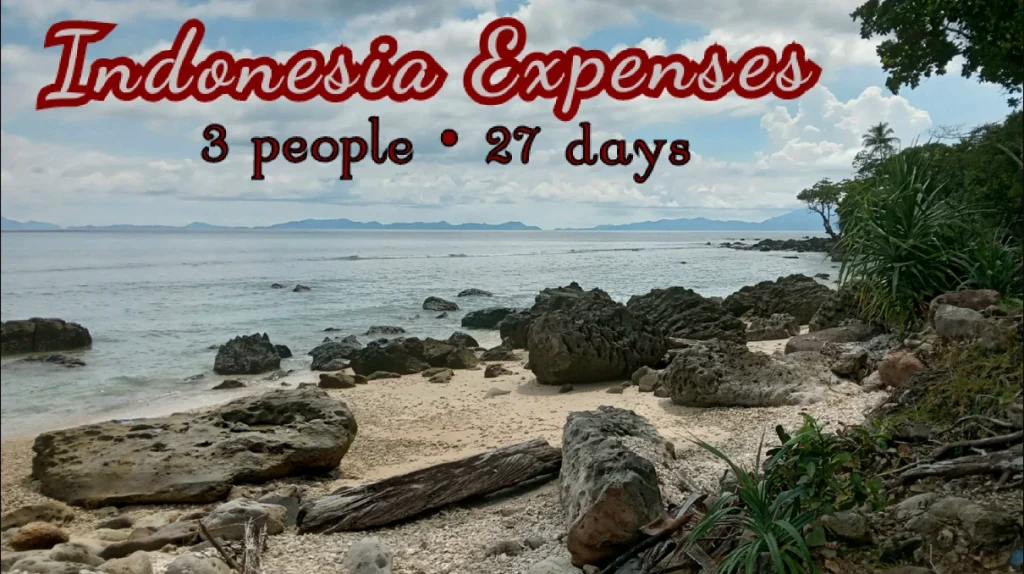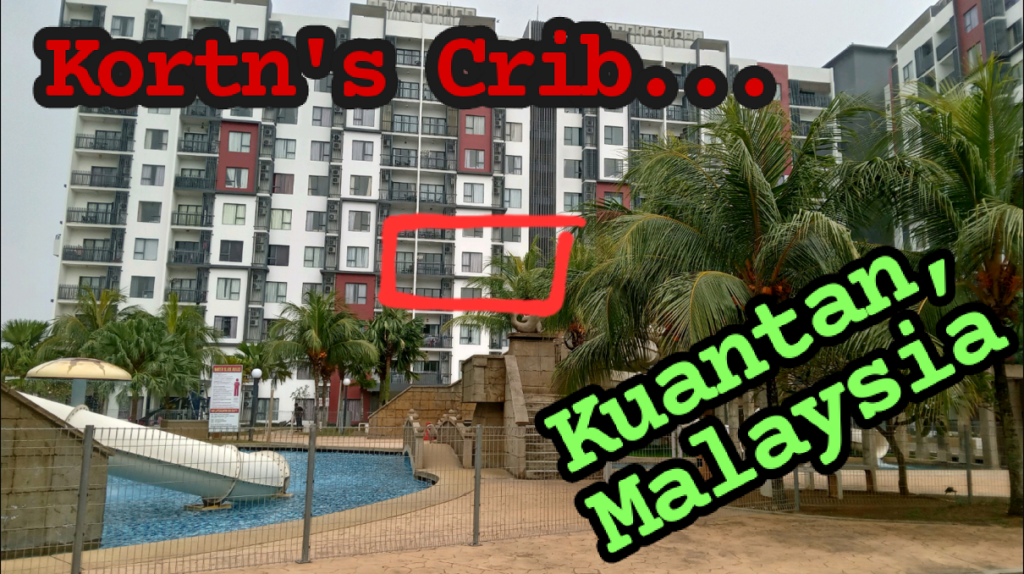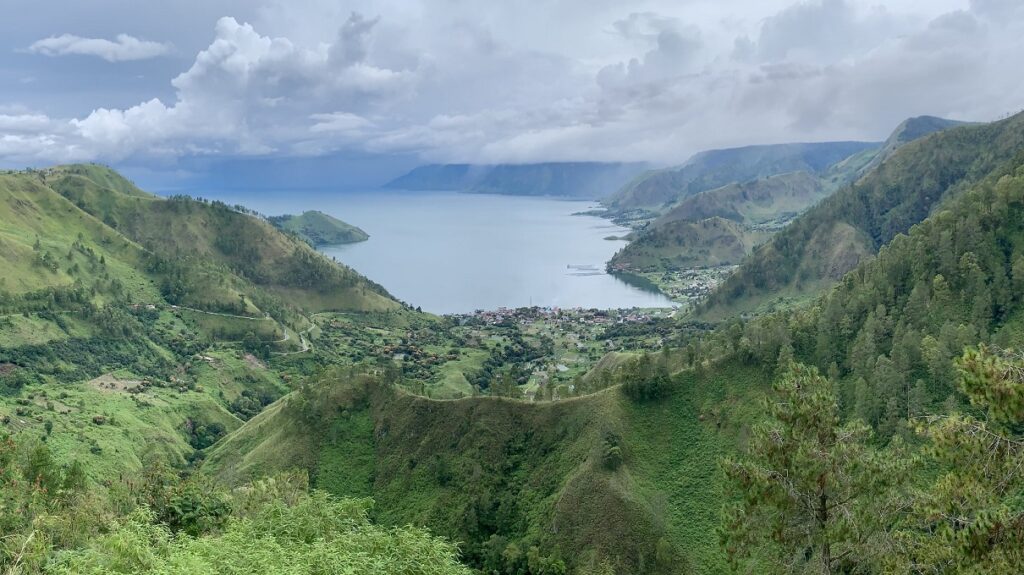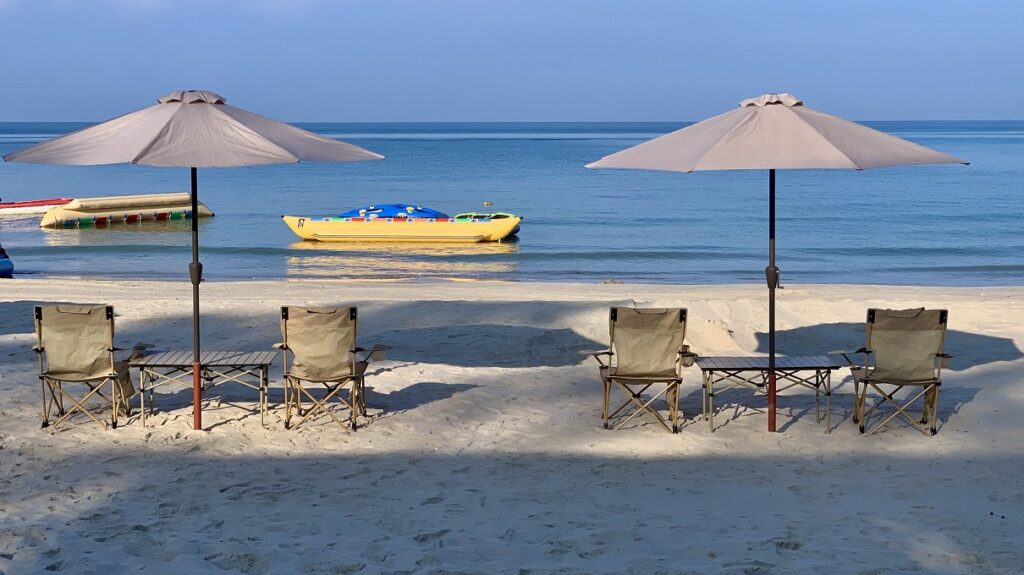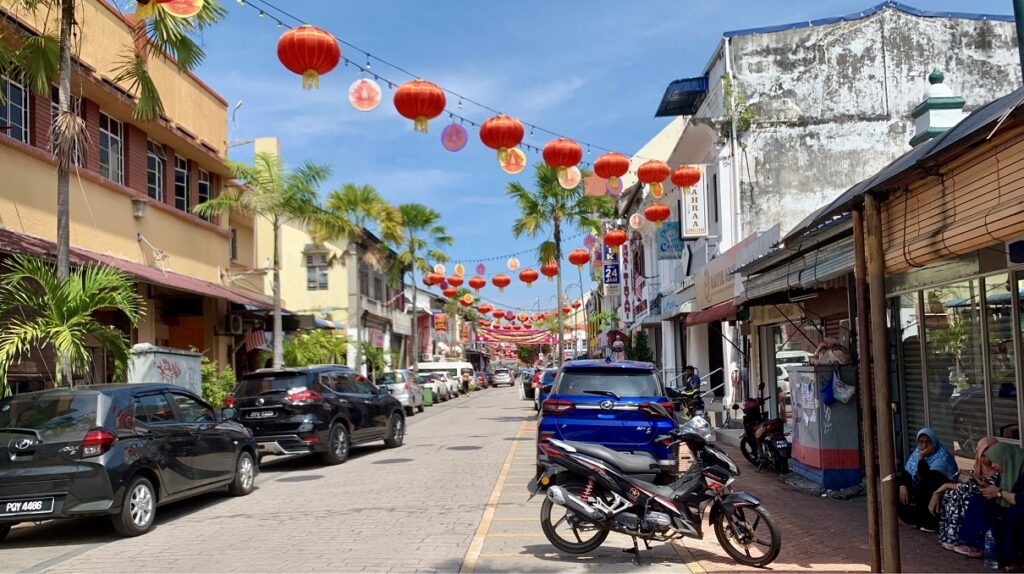Bucharest is a great city for budget slow travelers. The prices are reasonable for Europe, but there is so much more than the cost that will make you appreciate Romania’s capital. Before we get to 10 budget travel tips for Bucharest, here is a quick lay of the land.
Bucharest is a pedestrian and bike friendly city. Sidewalks and crosswalks make walking a breeze.
There are many large, beautiful parks that block city noise and offer tree-shaded refuge for wanderers around the city on hot days.
French influenced architecture from the turn of the 19th century is mixed with communist-era blocks and grand Orthodox churches.
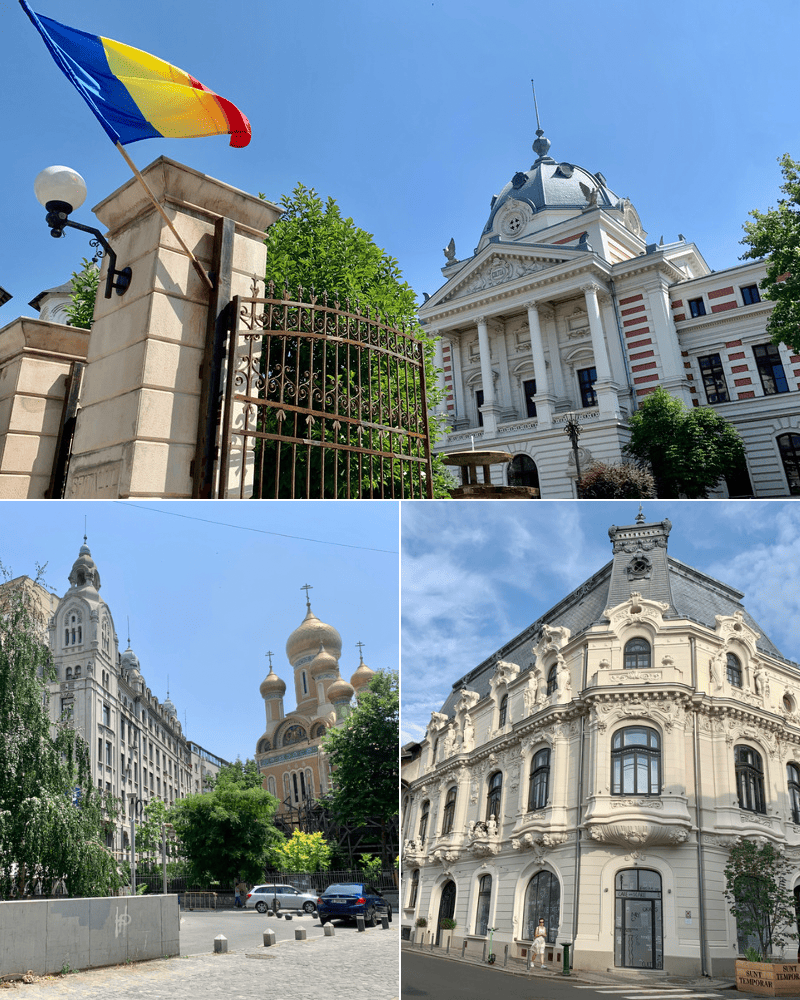
English is common enough to get by without knowing Romanian. Almost all young people speak it, and many older folks know at least a little English.
People are proud of their freedom now that communist dictatorship is long gone. And yet, remnants remain everywhere from those days, from the block buildings to memorial sites at locations where Romanians died in their revolution. Some older people are nostalgic about the good old days when everyone made equal incomes, while individuality is prized by those who earn more.
Romania was never part of the Soviet Union, but it had its own hell from the communist dictator Nicolae Ceausescu. He and his wife were executed by firing squad in 1989 as a result of the revolution. Today his mansion is a museum tucked into an affluent neighborhood with 21st century influences.
Young people use bikes, electric scooters, buses and trains to get to work, and also BMWs and Audis— cars are a sign of success here like everywhere. Older people pull carts on wheels with light bags of daily needs.
Summertime brings out tables on sidewalks of cafes, where wintertime huddles are undoubtedly inside. Second-hand shops fill many storefronts in every sector of the city. And this seems like a good spot to start the list of 10 budget travel tips for Bucharest, which is not in order of importance.
10 budget travel tips for Bucharest
1. Second-hand shops
Forget fast fashion that destroys the environment. Used clothing stores offer high-quality threads at lower prices. Two chains I like in Bucharest are Humana and Modamore, the latter a little pricier for its higher-end clothing. (Humana is also in other countries like Spain.)
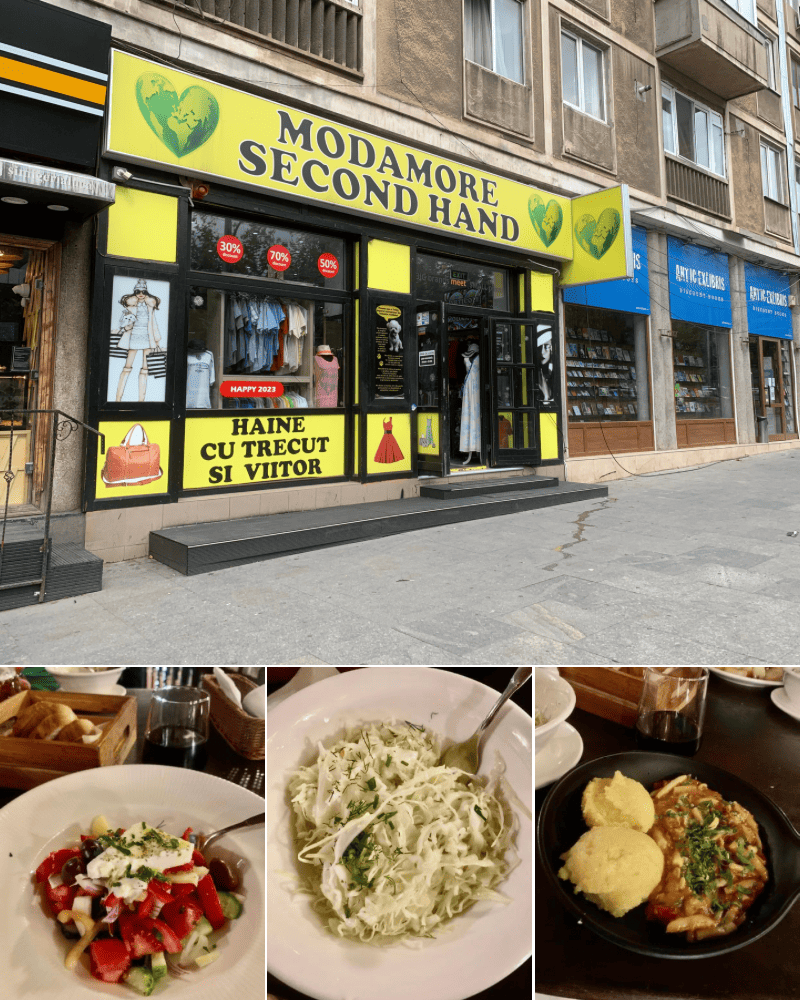
2. Set lunches
As in most European cities, look for Bucharest restaurants with set lunch deals. These are three-course meals with a few choices for each course. I like a popular restaurant in Old Town, Caru’ cu bere. It offers delicious, generous set lunches for only 7 euros. And: each course has a vegetarian option!
3. Food discounts
Bakeries are big in Bucharest, and some offer 50 percent discounts at the end of the day on whatever they didn’t sell. Mega Image grocery stores also frequently have goods for half off, so look around the store for the bright yellow stickers.
Regular price quick examples: 1.5 liters of milk – ninety cents; 150 gram cup of Greek yogurt: 80 cents to $1; 500 gram bag of pretzels: $1.25; 500 gram bag of peanuts: $2.60.
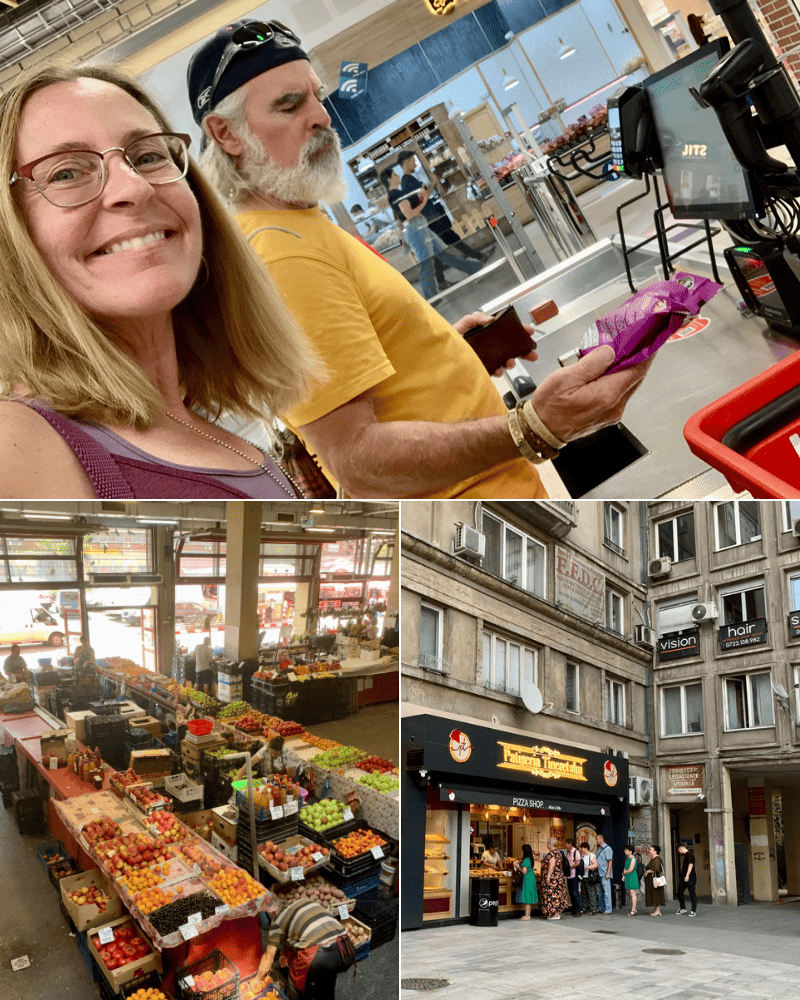
Also – the Obor Market has the lowest prices and best produce, fresh cheeses, and if you eat meat – that, too. Quick examples: 1 kilo of cherries (2.2 pounds): $3 – $4 and up, depending on quality; 1/2 kilo of feta cheese: $7.80.
4. Transportation
No car needed – most of the time. But if you need a car due to luggage on arrival or departure, Bolt is big in Bucharest. It’s like Uber. Otherwise, get a rechargeable transport card. Hold the card up to the sensors of buses and trams until you get a green light. You have 90 minutes to ride, including any transfers. The card fee is nominal; 10 rides are 25 lei.
Buy tickets at the STB stands at major piatas (plazas) and major intersections, pictured below.
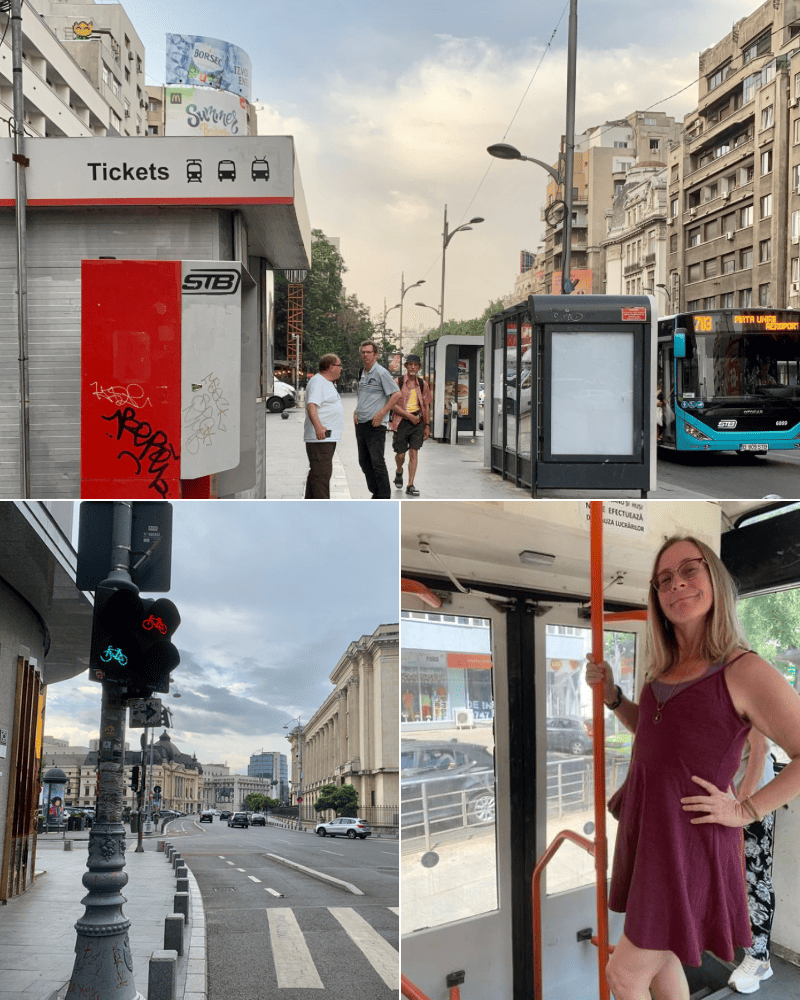
Metro rides are about 75 cents – separate from the bus/tram system. The metro is simple to navigate – and clean. Also, many stations have public bathrooms (also relatively clean) near the entry steps.
5. SIM cards
We don’t have any new phones with eSIM availability. But old-fashioned SIM cards are cheap. We used Orange and had great service in Bucharest and also in Transylvania. The cheapest is a 28-day prepaid plan with 5 gig. It costs 30 lei, or $6.75.
5 more budget travel tips for Bucharest (also good for any destination)
6. Airbnb monthly rentals
We always recommend monthly rentals for discounts given by some owners. Our place in Bucharest was in the southeastern part of Sector 1, a short walk to Victory plaza. See Theo’s video tour of our unit, which cost $650.
7. Picnics
A great way enjoy the city and people watch without spending too much money.
8. ‘Free’ walking tours
We did two in Bucharest through GuruWalk. Can’t recommend these enough. One for Old Town highlights, and one for the communist history. Each member of the group tour should kick in a ‘tip’ at the end.
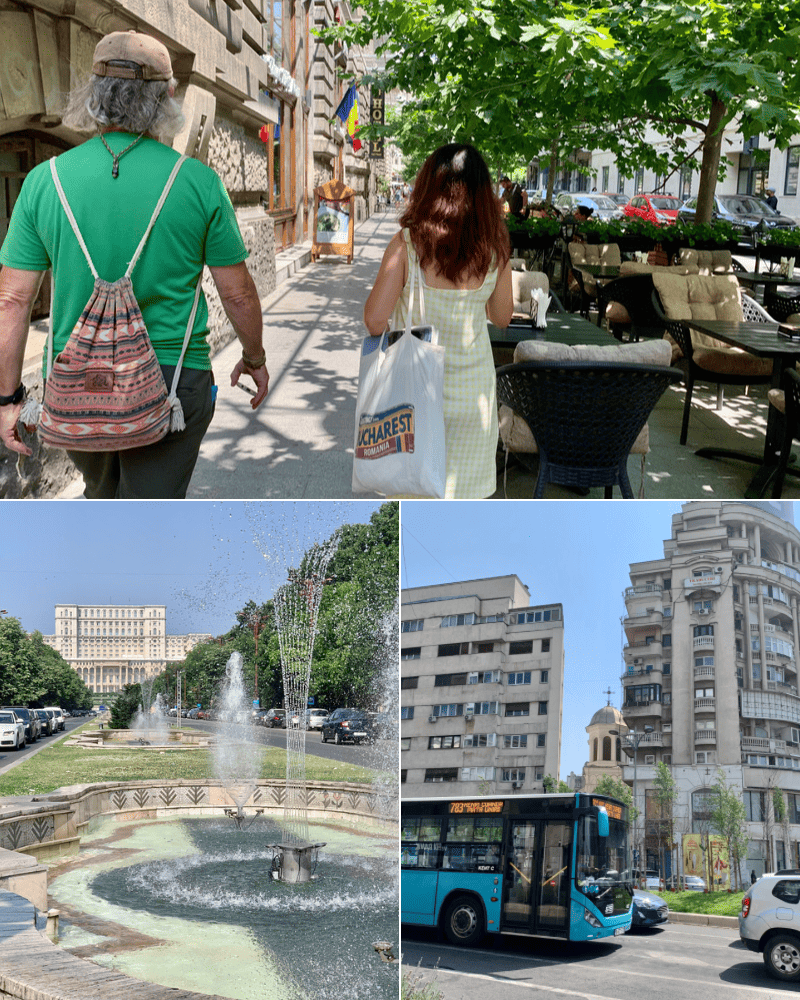
9. Free events
Search ways to see cultural attractions, because sometimes places like museums offer free entry on certain days.
An example in Bucharest: the light show at the water fountains on the main boulevard is free in summer on Fridays, Saturdays, and Sundays.
At the other end of Bulevardul Unirii (Union Boulevard) is the Palace of the Parliament. A long stroll down that street is worth it – even if you don’t pay to enter for a tour when you get there.
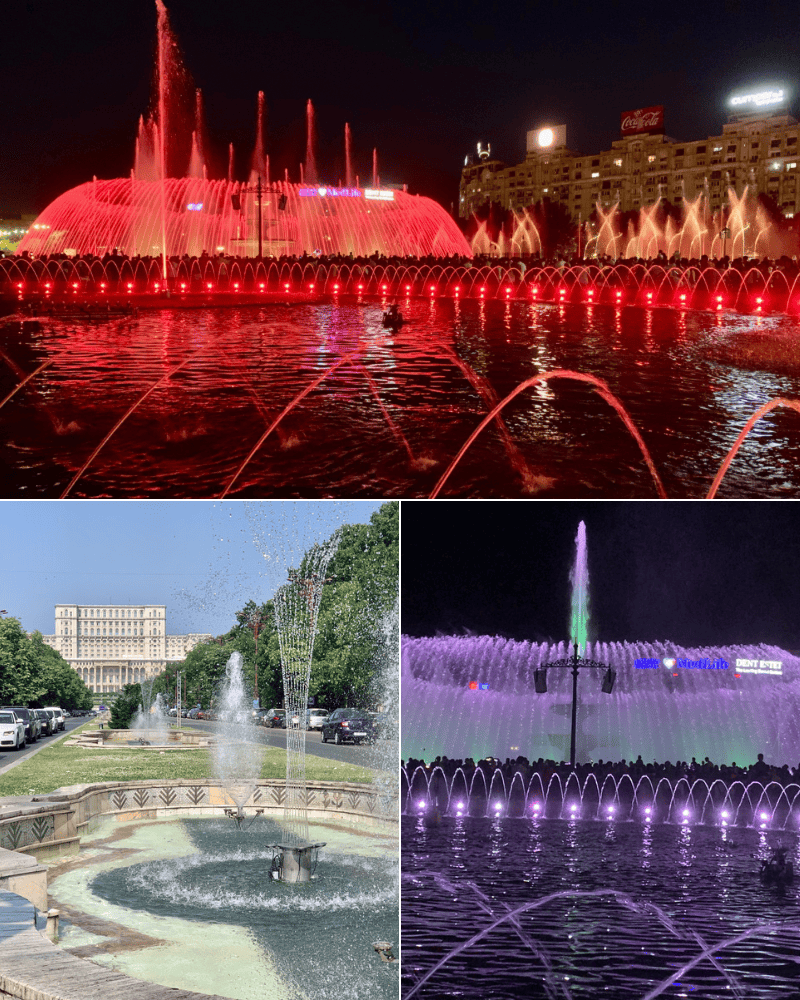
The Romanian Parliament building was built by the former dictator. It’s the second largest administrative building in the world, after the Pentagon in the United States of America. That tour, by the way, only covers five percent of the building. In fact, it’s so big, much of the building isn’t even used. We had to stand quite a distance from it to get it all into the photo. A full view of the building is at the top of this page.
Now back to the last of the 10 budget travel tips for Bucharest.
10. Take a bus joy ride
Use the bus to explore areas further than your legs will take you. Rides are cheap and window seats rule.
Price creep, health care, *new EU rules*
As a European Union member, eventually Bucharest will convert from the lei to the euro. Prices will increase then, as has happened in other countries such as Croatia. In Romania, locals already lament higher prices for everything. But compared to the rest of the EU, Bucharest is still a bargain for the near future.
The minimum wage is $670 a month, and the government takes a flat 45 percent across the board in taxes. Most of the people earning minimum wage are now ‘overseas foreign workers’ – people who come from poor countries like Nepal and Sri Lanka to get jobs as convenience store clerks and fast food workers.
Everyone groans about the taxes, but health care is free in public facilities. (Private care not included.) I will mention here that emergency health care is free for everyone— including tourists. I know two Americans who’ve both needed trips to an urgent care clinic.
Afraid of health care overseas? Don’t be!
Our special guide on global health care shows you:
- 7 easy steps to find the right doctors and hospitals
- Specific price examples for various medical services
- What to know about medical visas
- And more!
We go without travel health insurance, but many of the principles apply to those with coverage.
Lastly, as with all EU nations, travelers and tourists will need a security check starting in 2024. It’s called ETIAS. It stands for ‘European Travel Information and Authorization System. It will ‘authorize’ you to travel in the EU.
All Americans (and many other nationalities) will need this — regardless of whether an EU country is in the Schengen Zone or not. (Romania is not a Schengen member, yet.)
It’s not expensive, but it’s another step to your planning process. See the ETIAS rules on the official page.
I say Life is Now, so travel now.

